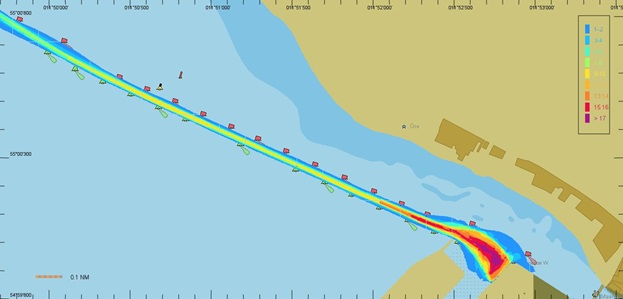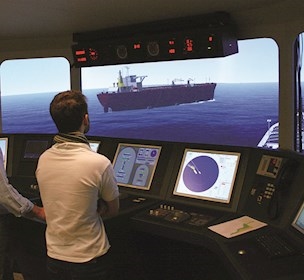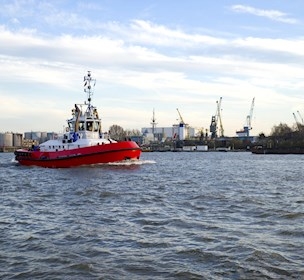How to avoid expensive downtime in approach channels
Due to the development in ship sizes, larger and larger ships must navigate through the sometimes very narrow and shallow approach channels, making adjustments necessary to fit today’s requirements for efficiency.
As ship sizes increase, the approach channels become limited in size in relation to safety and efficiency, hence increasing the risk of grounding. By using simulation, it is possible to examine the possibilities of increasing the safety and efficiency of the channels whilst keeping the dredging costs as small as possible.
Ensuring safe manoeuvring
By using a model of the existing approach channel, we are able to investigate the navigational conditions and thereby assess how much extra lateral manoeuvring space is necessary for the ships to navigate safely through the channel. We can also calculate if and how much tug assistance may be required and whether new or altered aids to navigation are necessary to navigate through the approach channel.When it comes to under-keel clearance (UKC), the port authorities often appoint a safety margin demand for the minimum UKC for a given approach channel based on the type of ships and their cargo.
Along with DHI, we perform UKC studies, which based on a combination of statistical data and numerical calculations of the waves, wind, and tide and the ship’s speed profile makes it possible to calculate the risk of a part of the ship’s bottom being lower than the safety margin.
Normally, an acceptable limit is one event out of 100 events where the safety margin is exceeded. Based on weather recordings for a year, we can determine how big a percentage of the year a ship will be able to call the port sailing through the approach channel without the risk of grounding. Similarly, this calculation could be made for e.g. a 10-year event.
Calculating the profitability
If the risk assessment of UKC proves that downtime cannot be entirely avoided, the method can be used to calculate exactly where and how much material the approach channel has to be dredged.Naturally, the results assume optimal use of tide and speed regulations in order to provide maximum under-keel clearance during transit of the approach channel.
As Bugge Torben Jensen, Senior project manager at FORCE Technology explains: “By testing the different ship sizes during different weather conditions, we are able to calculate the expected downtime and the financial consequence of the lost revenue can be estimated. This price can be compared to the price of dredging costs and thereby we can assess whether dredging will be profitable”.

Photo: Port of Vordingborg



